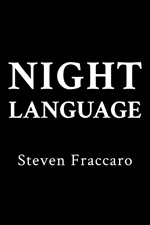The other week I went to a panel discussion and reception
for the current exhibition Gonightclubbing at the Fales Collection of the NYU Library.
This includes a reconstruction of the Video Lounge at Danceteria, a Manhattan
club that in its first incarnation existed briefly in 1980. The videos were by Pat
Ivers and Emily Armstrong and mainly consisted of concert footage from a range
of punk bands, shot at CBGB, the Mudd Club, and Danceteria. My interest was
entirely personal, for in those days I inhabited the latter two of these venues
nearly every night.
As I suspected, word had gotten around. When I arrived at
the Fales Collection, I had a glimmer of that sensation which Proust describes
towards the end of his novel, when he attends a reception after a long absence
from society and is faced with people who both do and do not look familiar. For
here was a room full of nightclub regulars, all of us thirty years or more
older than when we had last seen each other, a sea of sixty-year-old eccentrics,
all now shockingly gray.
The first person I recognized was Richard Boch, who appears
to have weathered the intervening years quite well. Richard was always a
painter, but is remembered by many of us as the doorman at the Mudd Club. He's recently finished writing a memoir of the era, 77 White, which is attracting considerable interest.
Marvin Taylor, director of the Fales, introduced the discussion.
Michael Parker, formerly of Ballistic Kisses, declaimed a poem in praise of the
era’s late-night clubs and the people who worked in them. Pat Place of the Bush
Tetras stood at the back of the room, as severe as she was years ago when she
sang “Too Many Creeps…” Then I spotted a
dark haired woman who was a keyboard player, a slender vampiress then, a
slender vampiress now, a few delicate lines in her face.
Richard Boch proceeded to interview Ivers and Armstrong, who
related how they met while working at Manhattan Cable in the 1970s, how they
started shooting bands like the Dead Boys, Television, and the Ramones at CBGB,
then moved on to the other clubs. They reminded us that the original Danceteria
was completely illegal, that they were paid in cash every night, and that the
club was open until eight in the morning. They also related how delegates
showed up during the week of the Democratic National Convention, name tags and
ties askew.
Danceteria lasted six months before it was closed by the
police. The thing was, in the middle of all this club madness, Pat and Emily
were working, lugging their heavy equipment around, trying to get decent
footage under difficult lighting conditions. They were working and we, the
regulars, weren’t.
There are commentators who attempt to put a veil of art
historical propriety over all this. This is a mistake. Those of us who went out
night after night in those days were generally on the run from everyday life,
in revolt against what is commonly termed “the real world.” There was nothing
normal about any of this, nothing of the day, except when we stumbled from the
club the next morning, pale and drained, and somehow made it home.
Shattering
daylight, shattering light
How
the hell did I make it through the night?
After the panel discussion, the reception provided a fitting
postscript. Everyone was far friendlier than in the past, when we used to stand
stony faced and hostile in these places. My wife was amused by the scene. “These
are people who have never worked in an office.” Well, perhaps some of us have,
in the intervening decades.





